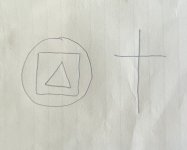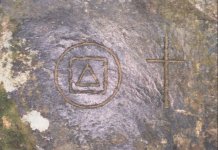adventurewithpurpose
Greenie
- Oct 6, 2024
- 13
- 7
I believe this to be a Jesuit symbol, maybe directions to a church treasure?
It is chiseled into rock on the coast of British Columbia in one of the many inlets. The geometry is %100 accurate and it’s evenly and fine chiseled like a mason would chisel a gravestone. See picture attached
It is chiseled into rock on the coast of British Columbia in one of the many inlets. The geometry is %100 accurate and it’s evenly and fine chiseled like a mason would chisel a gravestone. See picture attached









